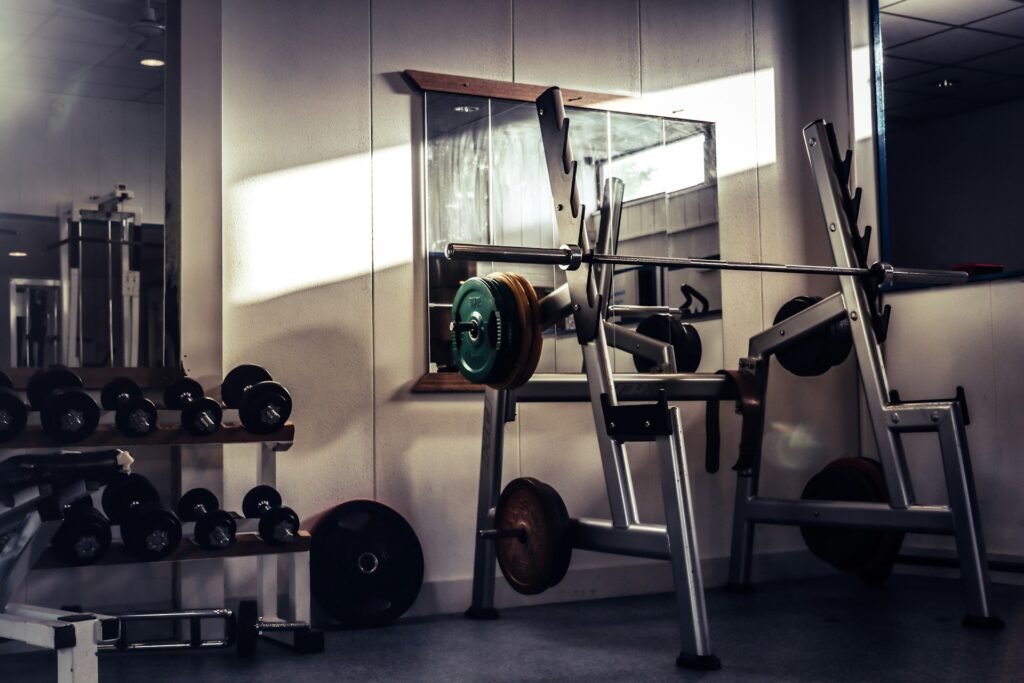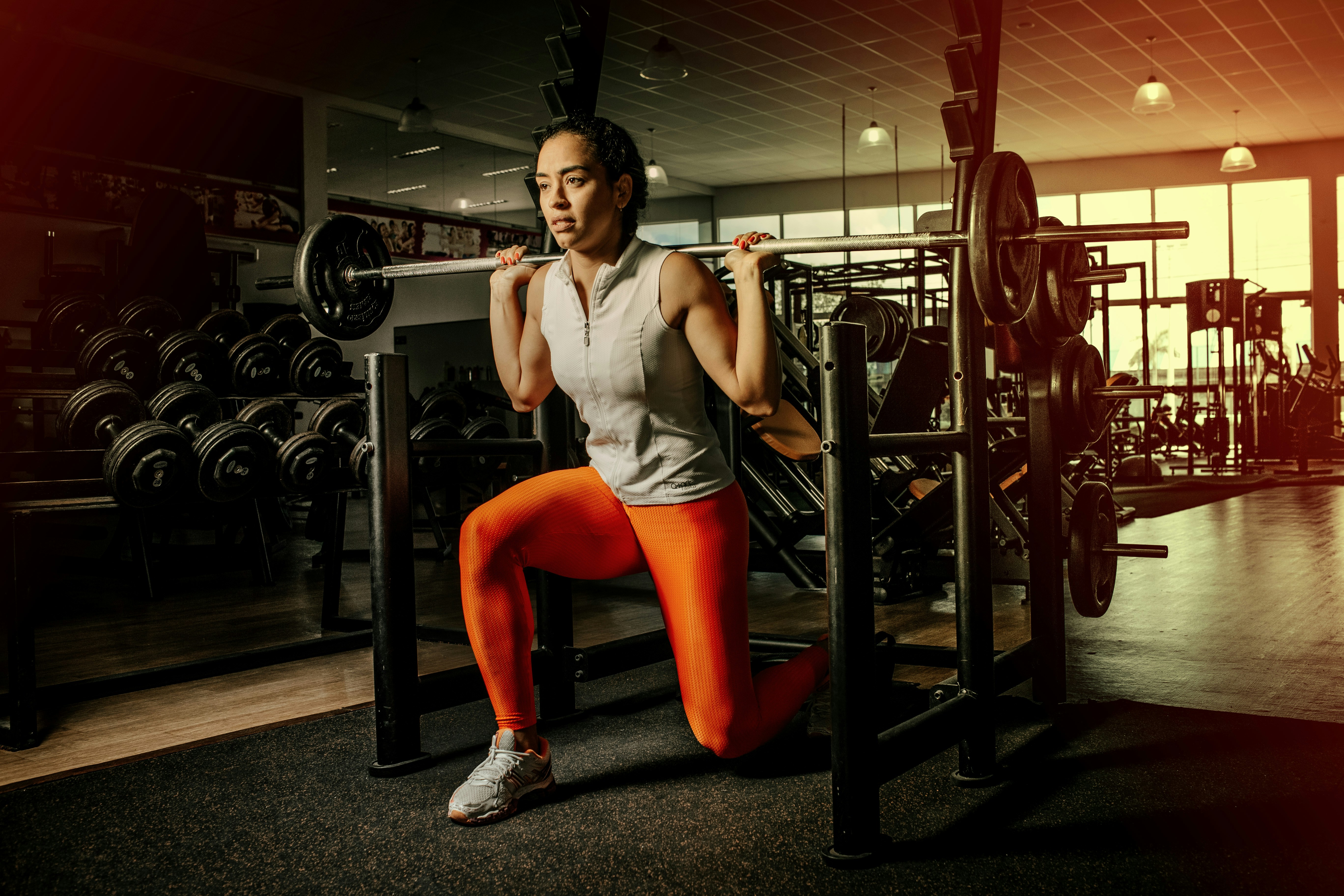
Photo by Jelmer Assink on Unsplash
Bulgarian split squats are highly effective for building leg muscles and improving overall balance. However, relying solely on this exercise can lead to several issues. One of the primary concerns is that repetitive performance of the same movement can cause overuse injuries. According to DB Method, switching exercises is essential to prevent muscle imbalances and reduce the risk of injuries. Diversifying your leg routine can help alleviate stress on specific joints and muscles.
Moreover, not everyone can comfortably achieve the level of balance required for Bulgarian split squats. Alternatives such as regular split squats or bench single leg hip thrusts can offer similar benefits while being less challenging for those with mobility issues. This allows individuals to progressively build strength and balance, making it easier to return to or master Bulgarian split squats in the future.
Another consideration is muscle targeting. Romanian deadlifts and other alternatives activate different leg muscles, such as the hamstrings and glutes. This variation ensures a comprehensive leg workout and helps in addressing any muscle weaknesses or asymmetries. The use of diverse exercises can also keep workouts engaging and prevent the monotony that might come from repeating the same movement pattern.
For those who might be interested in ensuring balanced strength across the body and not just the lower part, incorporating diverse exercises is key. To complement your workout routine, you can check out our full body barbell workout for a balanced and effective approach.
In summary, considering Bulgarian split squat alternatives can lead to a well-rounded and injury-free leg workout.
Exercise 1: Regular Split Squats
Regular split squats are a fantastic exercise to include in your leg workout routine. This exercise targets several major muscle groups including the quadriceps, glutes, hamstrings, and calves, making it an effective move for building lower body strength.
How to Perform Regular Split Squats
- Starting Position: Stand with your feet hip-width apart. Place your right foot forward and your left foot behind you, as if you are in a staggered stance.
- Movement: Slowly lower your left knee toward the ground, making sure your right thigh becomes parallel to the floor. Your front knee should be in line with your toes.
- Return: Push through the heel of your front foot to return to the starting position.
To get the most out of your split squats, aim for three to four sets of 8-10 repetitions on each leg. If you are a beginner, start with 5-8 reps and gradually increase as you build strength.
Benefits of Regular Split Squats
- Muscle Engagement: Regular split squats ensure balanced muscle development since they work one leg at a time. This isolation enhances muscle activation and helps improve overall muscle stabilization.
- Core Stability: By engaging your core muscles to keep your torso upright, regular split squats also contribute to better core strength and balance.
- Flexibility and Mobility: The wide range of motion required helps to improve flexibility in your hips and knees.
Split squats can be performed almost anywhere, and you can progress from bodyweight to using weights, like dumbbells, to add intensity. This exercise is a great alternative to lunges for those looking to switch up their lower body workouts.
If you want to further enhance your leg workouts, check out our article on low-impact cardio for bad knees for additional exercises that are easy on the joints.
For more details on split squats, you can refer to the original article on WebMD here.
Exercise 2: Reverse Lunges

Photo by Aparna Johri on Unsplash
Reverse lunges are a great alternative to the Bulgarian Split Squat for working your leg muscles with less strain on the knees. This exercise targets the quads, hamstrings, and glutes, making it effective for a comprehensive lower body workout.
To perform a reverse lunge, stand upright with your feet hip-width apart. Take a step back with your right foot and lower your body until your right knee almost touches the ground, forming a 90-degree angle at both knees. Push through your left heel to return to the starting position and repeat with the other leg.
Studies have shown reverse lunges to be beneficial for improving balance and coordination while effectively strengthening key leg muscles. According to research published in the “Journal of Strength and Conditioning Research,” lunge variations, including reverse lunges, can significantly increase lower body strength and hypertrophy source.
For those dealing with knee issues, reverse lunges can be easier on the joints compared to forward lunges due to reduced anterior knee stress. This makes them a suitable option for people looking to stay active while managing knee pain or discomfort.
For more low-impact leg exercises that are gentle on the knees, you can check our article on low-impact cardio for bad knees.
Exercise 3: Bench Single Leg Hip Thrusts
Bench single leg hip thrusts are a powerful exercise for targeting the glutes. This movement is particularly useful for improving unilateral strength, which can help to correct muscular imbalances and prevent injuries. According to Bret Contreras, a respected figure in the fitness industry, the hinge method is the recommended approach for executing single leg hip thrusts. This involves keeping your head, neck, and torso in a neutral position while hinging on a bench, pushing the hips upward and maintaining eye contact with a forward point. This technique ensures you work through a greater range of motion and engage a higher percentage of your body weight, leading to more effective glute activation source.
For beginners, Contreras suggests starting with bodyweight B-stance hip thrusts, which distribute about 70% of the load on the working leg and 30% on the assisting leg. As you progress, you can add weights such as dumbbells or even use a Smith machine for better stability and greater resistance.
Incorporating bench single leg hip thrusts into your leg workout routine offers myriad benefits. These include enhanced glute development, increased unilateral strength, and improved hip stability. To maximize your gains, aim for three sets of 10-15 repetitions on each side. Always ensure proper form to prevent injury and get the best results from your workout.
For those interested in further enhancing their lower body workouts, you might find our article on dumbbell leg workouts at home particularly useful.
Exercise 4: Curtsy Lunges
Curtsy lunges are an effective and stylish alternative to Bulgarian split squats, targeting the glutes, quads, and inner thighs. This exercise not only enhances your balance but also works the stabilizer muscles in your legs.
To perform a curtsy lunge, start standing with your feet hip-width apart. Step your right leg behind your left leg, crossing at the thighs, and lower your body until your left thigh is nearly parallel to the floor. Push through your left heel to return to the starting position and repeat on the other side.
Statistics show that exercises like curtsy lunges can significantly boost muscle activation. According to a study published in the Journal of Strength and Conditioning Research, lunges can enhance glute activation by up to 30% compared to squats. Fitness experts suggest incorporating 3 sets of 12-15 reps per side into your routine for optimal results.
Don’t forget that including a variety of lunges in your workouts can help avoid muscle strain and improve overall leg strength. For those concerned about their knees, check out our guide on low-impact cardio for bad knees to supplement your leg day routine.
Exercise 5: Weighted Step-Ups
Weighted step-ups are a versatile lower body exercise that targets the quadriceps, glutes, and hamstrings. They are particularly effective for building strength, enhancing balance, and improving coordination. According to Verywell Fit, adding weights to this exercise increases the load on your muscles, making it suitable for all fitness levels.
How to Perform Weighted Step-Ups:
- Set Up: Place a stable step, plyo box, or weightlifting bench in front of you. Hold a dumbbell in each hand at your sides.
- Step Up: Step onto the platform with your right foot, pressing through your heel to straighten your leg.
- Lift Up: Bring your left foot up to meet your right foot on the platform.
- Step Down: Step back down with your left foot, followed by your right foot.
- Repeat: Alternate the leading leg after each repetition to ensure balanced leg development.
Benefits:
- Muscle Strength: Weighted step-ups mainly work the quadriceps, crucial for knee stability and overall leg strength. They also engage the glutes and hamstrings, making this a comprehensive lower body exercise.
- Low Impact: Unlike plyometric exercises, step-ups are easier on the joints, making them ideal for individuals looking to avoid high-impact workouts.
- Functional Fitness: By simulating the action of climbing stairs, step-ups translate well to daily activities, enhancing functional strength.
- Improved Balance: The act of stepping up and down while controlling weights helps improve balance and proprioception, reducing the risk of falls.
Variations:
- Unweighted Step-Ups: Perfect for beginners, this variation allows you to master the form before adding extra weight.
- Barbell Step-Ups: Rest a barbell on your shoulders to increase the load, which can help build more strength.
- Explosive Step-Ups: Add an element of power by pushing off the step dynamically, suitable for advanced trainers aiming to boost explosive strength.
Inclusion in your routine can be as simple as adding this exercise to your leg day workout. Remember to start with lower steps (around 6-8 inches) and gradually increase the height and weight as your strength improves. If you’re interested in other low-impact strength training alternatives for bad knees, check out our Low Impact Cardio for Bad Knees guide.
Making the Most of Bulgarian Split Squat Alternatives

Photo by Jonathan Borba on Unsplash
To maximize the benefits of Bulgarian split squat alternatives, integrate them strategically into your workout regimen. These alternatives provide diverse stimuli to your muscles, helping to avoid plateaus and reduce the risk of overuse injuries.
- Rotate Exercises: Integrate exercises like reverse lunges, weighted step-ups, and bench single leg hip thrusts into your routine to hit different muscle angles. For example, you could alternate between regular split squats and curtsy lunges to keep your muscles guessing and provide balanced muscular development.
- Adjust Volume and Intensity: For muscle hypertrophy, aim for 3-4 sets of 8-12 reps per exercise, focusing on the eccentric (lowering) phase. If you’re targeting muscle endurance, consider 2-3 sets of 15-20 reps with lighter weights. Adjusting the weights and repetitions can also prevent workout monotony and encourage continuous progress.
- Use Proper Form: Proper form is key to preventing injuries and maximizing effectiveness. For instance, when performing a reverse lunge, ensure your knee does not pass your toes to avoid undue stress on your joints. Following correct form also ensures that targeted muscles are fully engaged.
- Incorporate Variety: Variety is beneficial not just for muscle growth but also for mental stimulation. Mix in exercises like staggered-stance Romanian deadlifts and front foot elevated split squats regularly. Each variation can target different parts of your legs, such as hamstrings and glutes, diversifying muscle use.
By incorporating these tips, you’ll keep your workouts effective and engaging. To explore more about optimizing your leg workouts, you can check out our at-home dumbbell leg workout for additional exercises tailored to target similar muscle groups.
With these alternatives, you can consistently challenge your muscles and maintain a balanced workout routine, ensuring continuous improvement and avoiding plateaus and injuries.
Source: The DB Method’s “7 Bulgarian Split Squat Alternatives”]